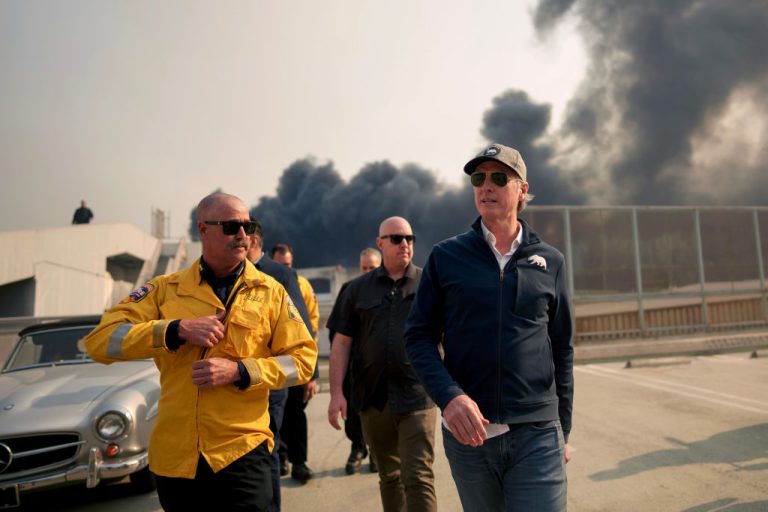The Wildfire of Misinformation: Social Media’s Role in Spreading Falsehoods and the Struggle for Solutions
The devastating wildfires that recently ravaged Los Angeles brought to the forefront a disturbing trend: the rapid proliferation of misinformation on social media platforms. From AI-generated images of the Hollywood sign ablaze to unfounded rumors about firefighting techniques, falsehoods spread like wildfire, hindering emergency response efforts and exacerbating public anxiety. This incident coincided with Meta, the parent company of Facebook and Instagram, announcing the discontinuation of its fact-checking program, raising concerns about the future of combating misinformation online and sparking debate about the role of state governments in regulating online content.
The issue mirrors the challenges faced by election officials in recent years, particularly following the 2020 presidential election. False claims of widespread voter fraud, fueled by then-President Trump’s refusal to concede defeat, circulated widely on social media, eroding public trust in democratic processes. The Los Angeles wildfire incident highlights the vulnerability of emergency situations to similar misinformation campaigns, with potentially life-threatening consequences. The spread of fabricated narratives, often amplified by algorithms that prioritize engagement over accuracy, underscores the urgent need for effective strategies to counter the detrimental impact of misinformation.
California has taken a pioneering step with legislation requiring social media platforms to remove deceptive AI-generated content related to state elections within 72 hours of a user complaint. The law also allows affected politicians and election officials to sue non-compliant companies. However, this measure has encountered legal challenges, with social media companies arguing that it infringes on their First Amendment rights and constitutes state-sponsored censorship. A lawsuit filed by X (formerly Twitter) against the state of California exemplifies the tension between regulating harmful content and protecting free speech. The outcome of this legal battle could have significant implications for future state-level efforts to combat misinformation.
While California’s approach represents a novel attempt to address election-related misinformation, few other states have enacted comparable legislation. Colorado, for instance, has focused on educational initiatives to combat misinformation, but stops short of targeting social media companies directly. Meanwhile, the U.S. Supreme Court has paused laws in Florida and Texas that sought to restrict social media platforms from banning or restricting content from politicians, highlighting the complex legal landscape surrounding online content moderation. The European Union’s more stringent regulations, which compel social media companies to actively curb misinformation, offer a contrasting approach, but raise concerns about potential overreach and censorship.
The current legal framework and the voluntary efforts of social media companies appear insufficient to address the growing crisis of online misinformation. Experts argue that social media algorithms, designed to maximize user engagement, often inadvertently amplify divisive and false content. This necessitates a more proactive approach from both platforms and government entities. In the absence of robust legal remedies, officials have resorted to direct engagement with misinformation, establishing websites and resources to debunk false claims and provide accurate information. This "pre-bunking" strategy, as employed by California Governor Gavin Newsom during the wildfires, aims to proactively counter misinformation before it gains widespread traction.
While direct engagement by officials plays a crucial role, individuals also bear responsibility in navigating the information landscape. Critical thinking, media literacy, and fact-checking skills are essential to discern credible information from falsehoods. X’s Community Notes feature, which allows users to flag potentially misleading content, represents a crowdsourced approach to fact-checking. However, studies suggest that this model may not be sufficiently effective, with a significant portion of corrective notes failing to reach users. Ultimately, a multi-faceted approach involving government regulation, platform accountability, and individual media literacy is necessary to effectively combat the pervasive threat of online misinformation.


